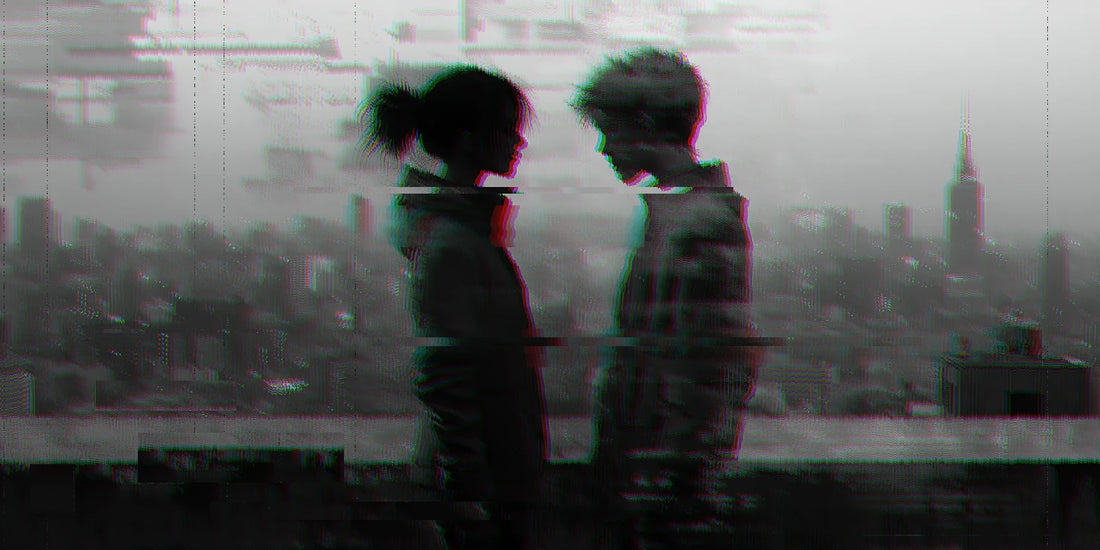Identity and Rebellion: Gender Expression in Cyberpunk Culture

Cyberpunk has always been a genre that embraces the collision of human identity and technology, projecting a world where the boundaries of society and self-expression blur. At the heart of this subversive aesthetic lies a celebration of rebellion, challenging traditional norms, including gender.
Gender expression in cyberpunk culture isn't just about fashion or aesthetics—it's a powerful form of resistance.
This post explores how cyberpunk culture empowers people to express their gender identity, defy traditional gender roles, and carve out their own place in a world where the future isn't set in stone.
The Intersection of Technology and Identity
In a cyberpunk future, technology infiltrates every aspect of life. This dystopian vision of a hyper-connected society, with advanced body modification and enhanced human capabilities, allows for the ultimate customization of identity. Gender expression becomes limitless, as technology erodes physical boundaries and opens up new ways to transform how we present ourselves to the world.
The genre encourages individuals to experiment with appearance, androgyny, and self-presentation.
Just as the human body can be modified with cybernetic enhancements, the boundaries of gender can be redefined or ignored altogether, using technological advances as tools of liberation.
Androgyny and Non-Binary Identities in Cyberpunk Fashion
Cyberpunk fashion often rejects traditional gendered clothing, pulling from diverse influences to create an aesthetic that is androgynous and fluid. Archetypal characters like Neo from The Matrix or Pris from Blade Runner blend masculinity and femininity into a cohesive, subversive style that signals the end of rigid gender binaries.
Androgyny plays a significant role in cyberpunk fashion:
- Sharp, angular silhouettes: Combined with oversized coats and asymmetrical designs for a non-binary aesthetic.
- High-tech fabrics and metallic tones: Reinforcing the futuristic, utilitarian nature of the genre.
- Tactical accessories: Functional yet rebellious, adding to the genre’s edgy appeal.
For non-binary and gender-fluid individuals, cyberpunk offers a canvas to explore layered forms of gender expression.
The Rebellious Spirit of Gender-Queer Icons
Cyberpunk’s anti-establishment ethos aligns naturally with the experiences of gender-queer individuals who resist societal expectations. Iconic characters like Motoko Kusanagi from Ghost in the Shell and V from Cyberpunk 2077 embody this rebellion:
- Motoko Kusanagi: As a cyborg in a female-presenting body, she questions the nature of identity, transcending biological limits and sparking discussions on the fluidity of gender.
- V from Cyberpunk 2077: A customizable protagonist who allows players to explore diverse gender expressions through body modifications, clothing, and hairstyles.
These characters represent the genre’s invitation to reimagine gender in a world where individuality and autonomy take precedence over societal constraints.
Fashion as Protest: Defying the Norms
Gender expression in cyberpunk culture is deeply linked to protest. Dressing outside of societal norms is a form of rebellion, and cyberpunk fashion amplifies this through its anarchistic, utilitarian designs. The mix of tactical gear with luxury fabrics transforms clothing into both a survival tool and a declaration of defiance.
Key elements of protest fashion in cyberpunk include:
- Studded leather jackets: Symbolizing raw defiance and rebellion.
- Asymmetrical cuts and distressed denim: Breaking from traditional silhouettes to emphasize individuality.
- Layered streetwear: Tactical, functional, and distinctly personal.
By rejecting gender lines in fashion, cyberpunk culture celebrates individuality and self-expression.
Cyberpunk’s Role in Reimagining Gender
At its core, cyberpunk is a commentary on the present, offering a speculative future where identity is constantly in flux. The genre’s hyper-connected worlds challenge the limitations of gender by inviting reinvention and embracing fluidity.
Today, cyberpunk influences are visible in mainstream fashion, with brands increasingly adopting:
- Gender-fluid designs and androgynous silhouettes.
- The rejection of traditional gender roles in clothing.
- A cultural rebellion against rigid societal structures.
Conclusion: A Future Beyond Gender Norms
Cyberpunk culture offers a world where the rules of identity, especially gender, are replaced with boundless self-expression. The genre celebrates rebels and visionaries who defy expectations, carving out new identities that reflect their truest selves.
In cyberpunk, fashion becomes a means of defying expectations and asserting identity in a binary world.
For those inspired by cyberpunk, the future isn’t just a dystopian vision—it’s a call to celebrate gender fluidity, individuality, and rebellion with unapologetic confidence.








